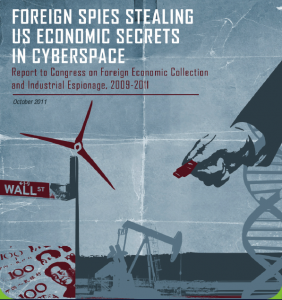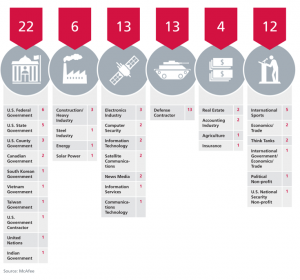The big headline that came out of yesterday’s American Bar Association National Security panels is that DOD General Counsel Jeh Johnson and CIA General Counsel Stephen Preston warned that US citizens could be targeted as military targets if the Executive Branch deemed them to be enemies.
U.S. citizens are legitimate military targets when they take up arms with al-Qaida, top national security lawyers in the Obama administration said Thursday.
[snip]
Johnson said only the executive branch, not the courts, is equipped to make military battlefield targeting decisions about who qualifies as an enemy.
We knew that. Still, it’s useful to have the Constitutional Lawyer President’s top aides reconfirm that’s how they function.
But I want to point to a few other data points from yesterday’s panels (thanks to Daphne Eviatar for her great live-tweeting).
First, Johnson also said (in the context of discussions on cyberspace, I think),
Jeh Johnson: interrupting the enemy’s ability to communicate is a traditionally military activity.
Sure, it is not news that the government (or its British allies) have hacked terrorist “communications,” as when they replaced the AQAP propaganda website, “Insight,” with a cupcake recipe (never mind whether it’s effective to delay the publication of something like this for just one week).
But note what formula Johnson is using: they’ve justified blocking speech by calling it the communication of the enemy. And then apparently using Jack Goldsmith’s formulation, they have said the AUMF gives them war powers that trump existing domestic law, interrupting enemy communications is a traditional war power, and therefore the government can block the communications of anyone under one of our active AUMFs.
Johnson also scoffed at the distinction between the battlefield and the non-battlefield.
Jeh Johnson: the limits of “battlefield v. Non battlefield is a distinction that is growing stale.” But then, it’s not a global war. ?
Again, this kind of argument gets used in OLC opinions to authorize the government targeting “enemies” in our own country. On the question of “interrupting enemy communication,” for example, it would seem to rationalize shutting down US based servers.
Then, later in the day Marty Lederman (who of course has written OLC opinions broadly interpreting AUMF authorities based on the earlier Jack Goldsmith ones) acknowledged that Americans aren’t even allowed to know everyone the US considers an enemy.
Lederman: b/c of classification, “we’re in armed conflicts with some groups the American public doesn’t know we’re in armed conflict with.”
Now, as I’ve noted, one of the innovations with the Defense Authorization passed yesterday is a requirement that the Executive Branch actually brief Congress on who we’re at war with, which I take to suggest that Congress doesn’t yet necessarily know everyone who we’re in “armed conflict” with.
Which brings us to how Jack Goldsmith defined the “terrorists” whom the government could wiretap without a warrant.
the authority to intercept the content of international communications “for which, based on the factual and practical considerations of everyday life on which reasonable and prudent persons act, there are reasonable grounds to believe … [that] a party to such communication is a group engaged in international terrorism, or activities in preparation therefor, or any agent of such a group,” as long as that group is al Qaeda, an affiliate of al Qaeda or another international terrorist group that the President has determined both (a) is in armed conflict with the United States and (b) poses a threat of hostile actions within the United States;
It’s possible the definition of our enemy has expanded still further since the time Goldsmith wrote this in 2004. Note Mark Udall’s ominous invocation of “Any other statutory or constitutional authority for use of military force” that the Administration might use to authorize detaining someone. But we know that, at a minimum, the Executive Branch used the invocations of terrorists in the Iraq AUMF–which are much more generalized than the already vague definition of terrorist in the 9/11 AUMF–to say the President could use war powers against people he calls terrorists who have nothing to do with 9/11 or al Qaeda.
So consider what this legal house of cards is built on. Largely because the Bush Administration sent Ibn Sheikh al-Libi to our Egyptian allies to torture, it got to include terrorism language in an AUMF against a country that had no tie to terrorism. It then used that language on terrorism to justify ignoring domestic laws like FISA. Given Lederman’s language, we can assume the Administration is still using the Iraq AUMF in the same way Goldsmith did. And yet, in spite of the fact that the war is ending, we refuse to repeal the AUMF used to authorize this big power grab.



